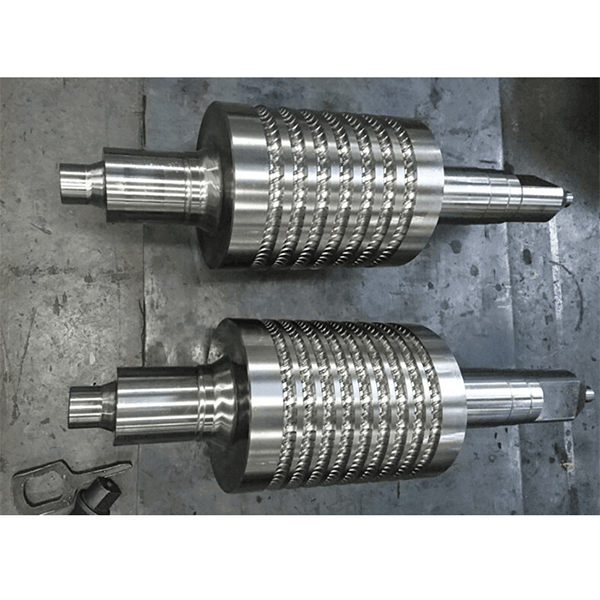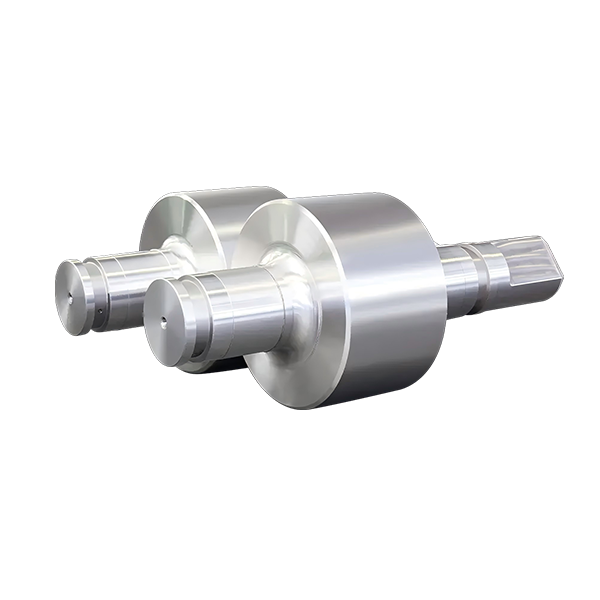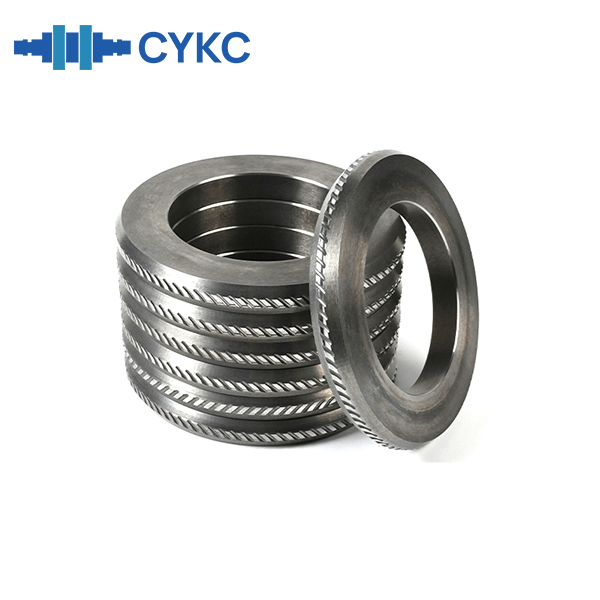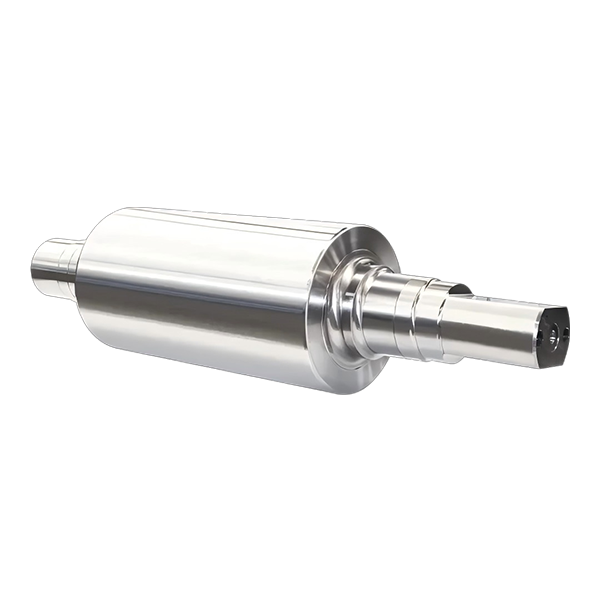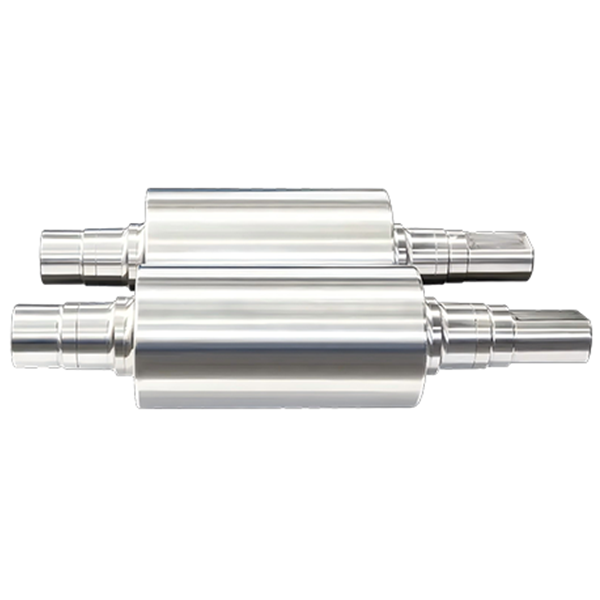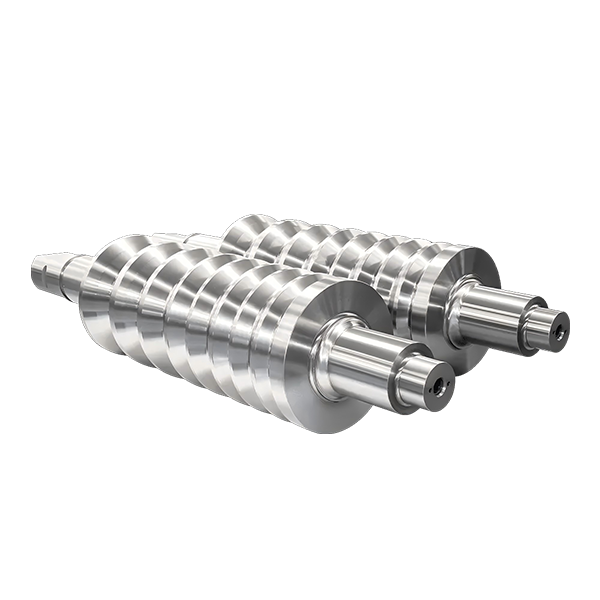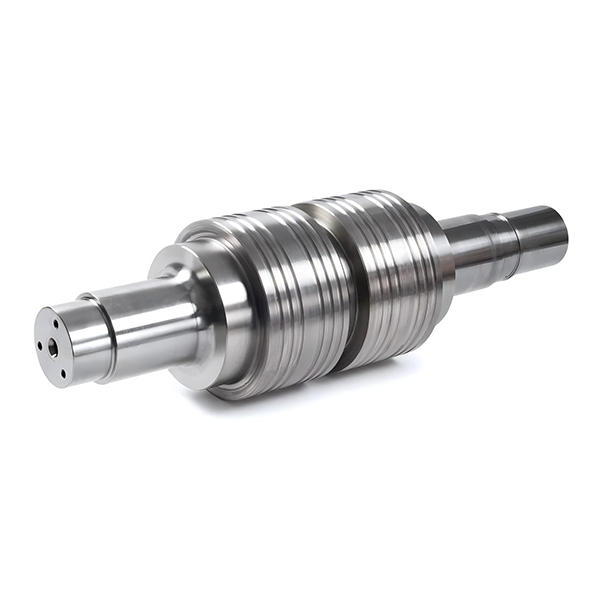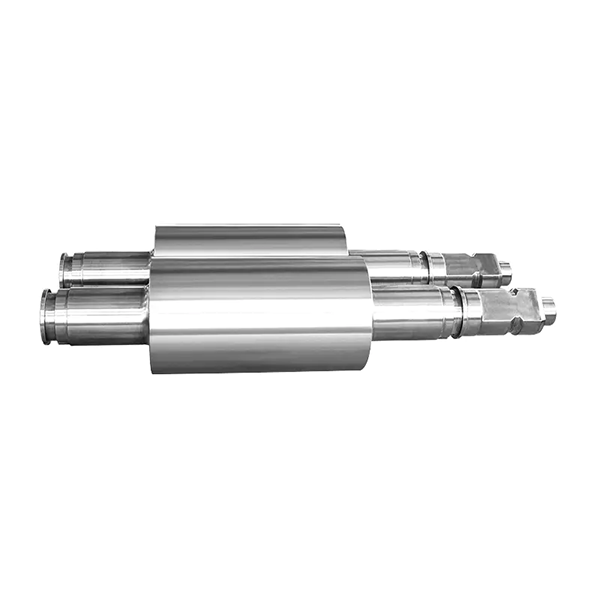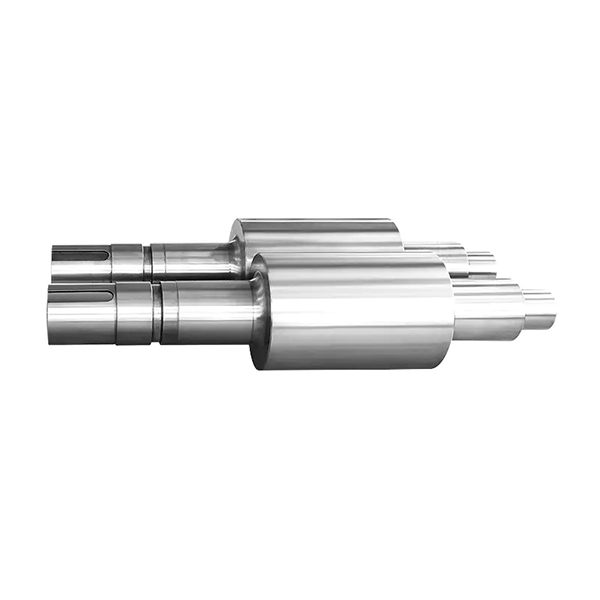I. Working environment and failure forms of hot-rolled rolls
Even if the purpose and design are similar, the working conditions faced by different rolls in actual operation are very different. During the hot rolling process, the metal contacts the roll to generate high temperatures, resulting in:
The roll surface temperature rises to 750–850°C;
The thermal expansion difference between the roll surface and the cooling layer causes thermal stress (compression stress on the surface and tensile stress inside);
The rapid water cooling after thermal contact forms an alternating stress cycle, causing surface thermal fatigue;
The surface layer produces fire cracks and fatigue crack networks under long-term use.
Research shows that the temperature fluctuation range of the roll surface can reach 300°C, while the temperature 3-4mm away from the surface is less than 100°C, indicating that the thermal stress is concentrated in the surface layer.
2. Performance requirements of hot rolling roll materials
In order to cope with complex thermal alternating loads, the steel used for hot rolling rolls must have the following characteristics:
High temperature strength and thermal stability;
Excellent wear resistance and thermal fatigue resistance;
Good thermal conductivity and oxidation resistance (especially when using electric current heating process);
Strong resistance to fire cracking and thermal cracking.
The typical steel grades currently used for forging hot rolling rolls include: 55X, 60XG, 50XN, 60XN, 50# steel, etc.
At high temperatures, pearlite steel will undergo cementite spheroidization, affecting the hardness and organizational stability of the material.
In actual applications, CYKC GROUP continues to optimize the steel grade ratio and heat treatment process to improve the stability and life performance of hot rolling rolls in high temperature and high stress environments.
3. Current status of composite rolling rolls
In order to improve wear resistance and crack resistance, the industry generally uses centrifugal casting composite rolls, using high alloy steel for the working layer and using tough materials for the matrix. Commonly used surface materials such as semi-HSS steel produce about 1mm wear after rolling 50,000-90,000 tons of steel, but still need periodic grinding and repair.
CYKC GROUP adopts advanced composite casting technology to make the working layer and the core material densely bonded, with excellent resistance to thermal fatigue and cracking. Our composite rollers are widely used in various hot rolling production lines and have been highly praised by customers.
IV. Advanced roller coating technology
In order to extend the life of the roller and reduce the frequency of grinding, modern coating technology has come into being. The ideal coating should have:
Extremely high wear resistance and corrosion resistance;
Good thermal stability and bonding strength;
Suitable for surface treatment of large rollers.
The following are three cutting-edge coating technologies:
1. Diffusion saturation coating (boron chromization)
The steel surface is thermally diffused with boron carbide B₄C + chromium powder + NaCl activator in a vacuum;
Stable (Fe,Cr)₂B and (Fe,Cr)B composite hard phases are formed;
The coating has strong resistance to high temperature wear.
2. Detonation gas thermal spraying technology
Use acetylene and oxygen mixed combustion to generate detonation waves;
High-temperature and high-speed airflow sprays powder onto the roller surface at 1500 m/s and 2000°C;
Porosity is as low as 0.1%, adhesion strength is 180 MPa, and thermal impact on the substrate is small.
3. Self-ion saturation coating (atomic ion sputtering)
Use high-frequency discharge to form non-equilibrium plasma;
Provide high-concentration metal ion beams and neutral atoms for co-deposition;
Achieve amorphous, nanocrystalline structure or ceramic-grade hardness metal layers;
Can deposit a uniform coating with a thickness of up to 1mm at near room temperature.
This method can also achieve multiple strong bonding mechanisms such as atomic implantation, surface cleaning, and chemical bond enhancement, and is one of the most promising hardening technologies at present. CYKC GROUP is actively exploring such green and efficient surface treatment technologies to meet customers' urgent needs for longer service life and less maintenance costs.
V. Conclusion: The integration of materials and processes is the key
With the continuous improvement of steel performance requirements, the materials and surface strengthening technologies of hot rolling rollers are also constantly improving. From traditional forged steel to composite rolls, and then to the application of high-performance coatings, the life and performance improvement of hot-rolled rolls are increasingly dependent on the deep integration of material engineering and surface treatment processes.
CYKC GROUP has always been committed to promoting the combination of advanced materials and manufacturing technologies in the field of rolls, and creating high-performance hot-rolled roll solutions suitable for harsh working conditions. In the future, we will continue to focus on technological innovation and provide more durable, reliable and economical roll products for global steel companies.


